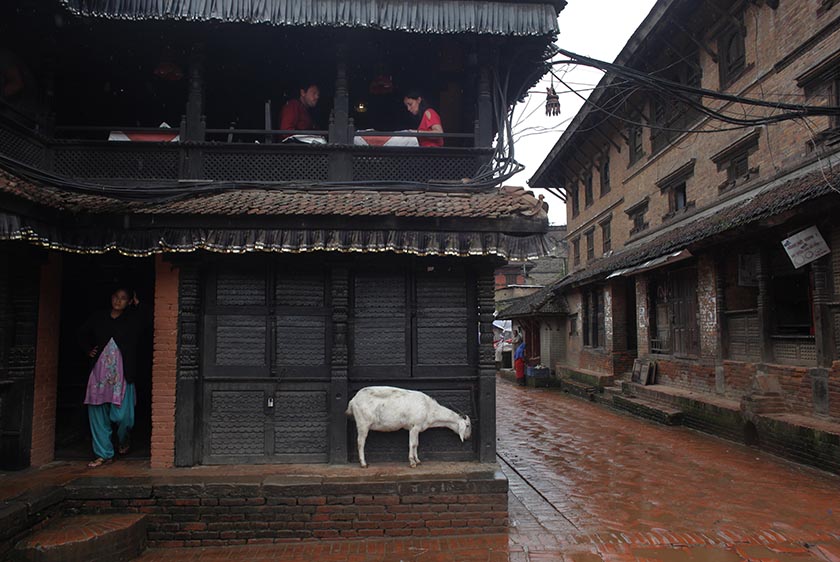Seismic agility and structural fragility
On April 25, 2015, the devastating Gorkha Earthquake destroyed around half a million residential houses and ramshackled another half a million in 31 districts. After the Gorkha Earthquake, improved housing construction is widely practised in urban as well as rural Nepal, especially in the earthquake-affected areas. Meanwhile, the newer constructions are facing multifaceted challenges as Nepal is frequently affected by other natural hazards, such as fires, landslides and floods, among others. To this end, the room for improvement in the housing sector has grown bigger of late as public concern regarding occupants’ safety has widened.
New studies on seismic and multi-hazard vulnerability of residential dwellings in Nepal by our research group reflect very high vulnerability of Nepali residential buildings. The grim future of enormous losses can be downscaled only if the existing highly vulnerable more than three and half million buildings are strengthened. Strengthening priorities are direly needed, but before that, reliable statistics would be needed for prioritisation of immediate to long-term countermeasures. The focus now should be the highly vulnerable stone masonry buildings after Gorkha towards the west.
Fundamentally, buildings beyond Gorkha or in the far eastern region of Nepal were already shaken to some extent by the Gorkha Earthquake and the eastern Nepal earthquake of 2011. However, they may have seldom shown signs of damage and are thus being occupied without any interventions. It is required that building service age be defined in Nepal now on. Else, uninterrupted use of buildings for generations is quite common, and even such buildings lack periodic improvements and strengthening.
National Reconstruction Authority apart, there should be another authority to look after the strengthening and retrofitting measures. However, in many locations, new construction would be more economical than retrofitting. So, sectoral priorities and assessment of availability of construction materials are pivotal.
The next batch of vulnerable constructions would be the already constructed buildings before the endorsement of the new building code in Nepal. As the new code will be functional sometime soon, many existing buildings that were designed as per the existing regulations may be non-compliant. In this case, seismic improvement is also required for all such structures.
The Gorkha Earthquake did not solely hit the residential and public infrastructure sector. Infrastructure losses were also enormous as strategic road networks, hydropower projects, water supply systems, telecommunication networks and many other infrastructure projects sustained considerable losses. This situation demands resilient infrastructure for better preparedness in the future.
The strategic highway that connects Nepal and China is yet to be fully operational due to the earthquake and cascading natural hazards. This, in fact, should be an eye-opener for Nepal and other countries that are prone to multiple cascading and independent natural hazards. Focus on multi-hazard vulnerability assessment, periodic condition assessment and life-cycle analyses should be Nepal’s priorities. The context has changed. It is now easier to save lives with resilient and safer buildings.
The lack of scientific studies and understanding of Nepali infrastructure is also a grave challenge. Auditing multi-hazard vulnerability of infrastructure can assure response, relief and recovery priorities. Insurance polices may also have the benefit of such audits. Manpower is also a big problem to perform high-level analyses and assessments of structures and infrastructure to assure their performance during multiple hazards.
The emergence of structural earthquake engineering practices is commendable; however, there is little to no effort to carry out multiple independent and cascading hazard impact analyses and associated loss scenario depiction. The government should establish an elite research institute to solve the real-life challenges due to multiple hazards and to develop rational indigenous solutions for particular problems and sites. Multi-disciplinary researches are required to face the challenges of multifaceted natural hazards. The framework of such an elite and dedicated research institute should integrate the academia, industry, public and private sectors to acquire necessary funds and to develop and implement innovative solutions.
In Nepal, natural hazards are always underestimated until they become disasters. So was the case with the Gorkha Earthquake. There were intense discussions regarding earthquake hazards in Nepal; however, preparedness was low if not insignificant. Most of the efforts were confined to documents only, and the sudden earthquake evoked devastation that was confined to rural neighbourhoods. Not only buildings and fatalities but also the infrastructure damage was irreparably large in the rural settings. Since then tens of thousands of people have not been able to streamline their livelihoods due to the damaged infrastructure. The case is best reflected in the once vibrant economic town but now deserted Barhabise of Sindhupalchowk.
The first and foremost effort to reduce the impacts of natural hazards, be they single or multiple, should kick off with land use planning and prioritisation. In the name of urban expansion, most of the arable lands that may show liquefaction-induced damage, as in the case of Khadka Gaon in Kathmandu, are being converted into land plots. If Nepal does not assure safe locations for settlements and infrastructure development, the grim future will be even grimmer.
Gautam is a researcher in structural earthquake engineering.






